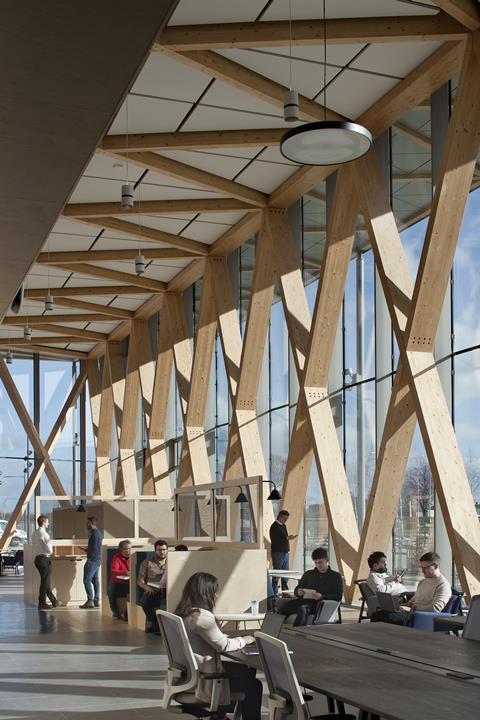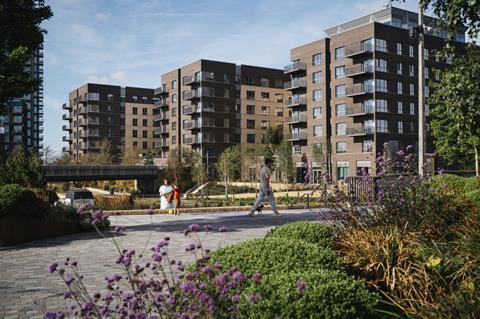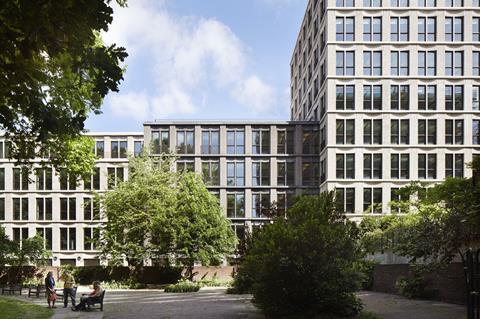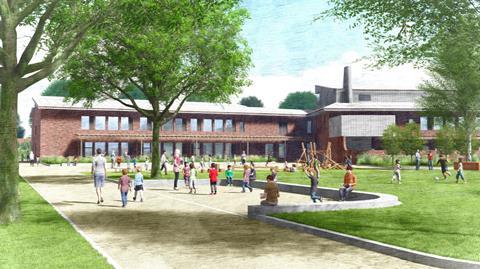In a series celebrating BD’s Architect of the Year Awards finalists, we look at the Net Zero Architect shortlist
Earlier this year BD announced all the architects who made it on to the shortlists for our prestigious annual Architect of the Year Awards.
Now we are shining the spotlight on each category in turn and publishing a selection of the images that impressed the judges.
This year’s judges include: Jo Bacon, partner, Allies & Morrison; Murray Kerr, director, Denizen Works; Dav Bansal, partner, Howells; Kay Hughes, design director HS2; Peter Caplehorn, chief executive, Construction Products Association; Peter Fisher, director, Bennetts Associates; Anna Hollyman, Senior Sustainability Advisor, UK Green Building Council; Marta Galinanes Garcia, director, AKTII; Darryl Chen, partner, Hawkins\Brown; Lee Higson, director, Eric Parry Architects; Maria Joao Reis, senior associate, Maccreanor Lavington
Today’s shortlist is Net Zero Architect of the Year Award.
Architecture for London

At Low Energy House, the practice used a fabric-first methodology to retrofit a north London house to Passivhaus or better standards, as well as adding a sympathetic rear extension. An ongoing refurbishment and extension to a Clerkenwell office aims to reduce emissions by 34% compared to Building Regulations requirements. The entry also features two further refurbishments of London homes including Stone House, where interventions included a stone pavilion rear extension.
Fletcher Priest

The under-construction retrofit of One Exchange Square in the City of London aspires to have 50% less embodied carbon than typical office buildings. Refurbishment of Warwick Court cut operational carbon footprint by up to 45%. At the proposed 55 Old Broad Street development, retention of the basement will save the equivalent of 1900 tonnes of carbon. The new build 100 Fetter Lane project is using materials passports to cut whole-life carbon.
HLM Architects

The four higher education projects submitted include HLM’s participation in the University of Glasgow Net Zero Campus, an Innovate UK-funded research and development project that used digital twins to optimise building performance.
HLM completed two carbon neutral in operation buildings - The Wave, a £85million Faculty of Social Sciences for the University of Sheffield and the £40million National Manufacturing Institute Scotland in Glasgow.
HTA Design

The practice describes itself as a leader in the design of net zero homes. Its entry includes the proposed Wensley Road housing for Reading Borough Council, which includes new, net zero carbon homes and retained blocks refurbished to close to EnerPHit standards. In addition to housing, HTA’s submission also features its London studio Wallis Road, an adaptive reuse of a Victorian warehouse which significantly reduced operational carbon.
Morris + Company

The London practice’s own Mare Street office retrofit followed circular principles and reduced carbon per employee by 31%. For Derwent London, the Featherstone Building at Old Street is a net zero embodied and low-operational carbon office building. One Wood Crescent, Television Centre, at White City uses DfMA and off-site fabrication to minimise waste, as well as low-carbon concrete. At the proposed North Crescent office development in Bloomsbury, retention of the existing fabric is prioritised.
PRP

Botanical Place, due to complete in 2024 in West Byfleet, will be the UK’s first whole life net zero carbon development in the later-living sector, providing 197 apartments above commercial facilities. Another town centre scheme, Pydar Street, for Cornwall Council in Truro, aspires to be zero carbon in use by 2030. At Brassington in Salford, PRP has completed 12 affordable low carbon homes, significantly reducing energy use and nearly eliminating fuel bills.
tp bennett

Completed earlier this year in Leeds, 11 & 12 Wellington Place are the first buildings to achieve a NABERS Design Reviewed Target of five stars rating outside London. Operational energy targets 41% less than average UK office buildings. In London, an office design for the Australia & New Zealand Banking Group prioritised refurbishment or remanufacture of furnishings and furniture, avoiding 19.3 tonnes of carbon.
van Heyningen & Haward

At Houlton School, a GPO radio station-turned-secondary in Rugby, the practice minimised energy use through passive means, retrofitting the historic buildings to transform their airtightness and thermal performance. The project informed the proposed Waterbeach Barracks Primary School, which is designed to generate 80% of its energy demand. The entry also includes a new build primary and the ongoing, low energy refurbishment of Leicester Cathedral.
Postscript
The Architect of the Year Awards are on Tuesday 17th October 2023 at The Brewery, 52 Chiswell Street, London, EC1Y 4SA.
Book your place here.
















No comments yet